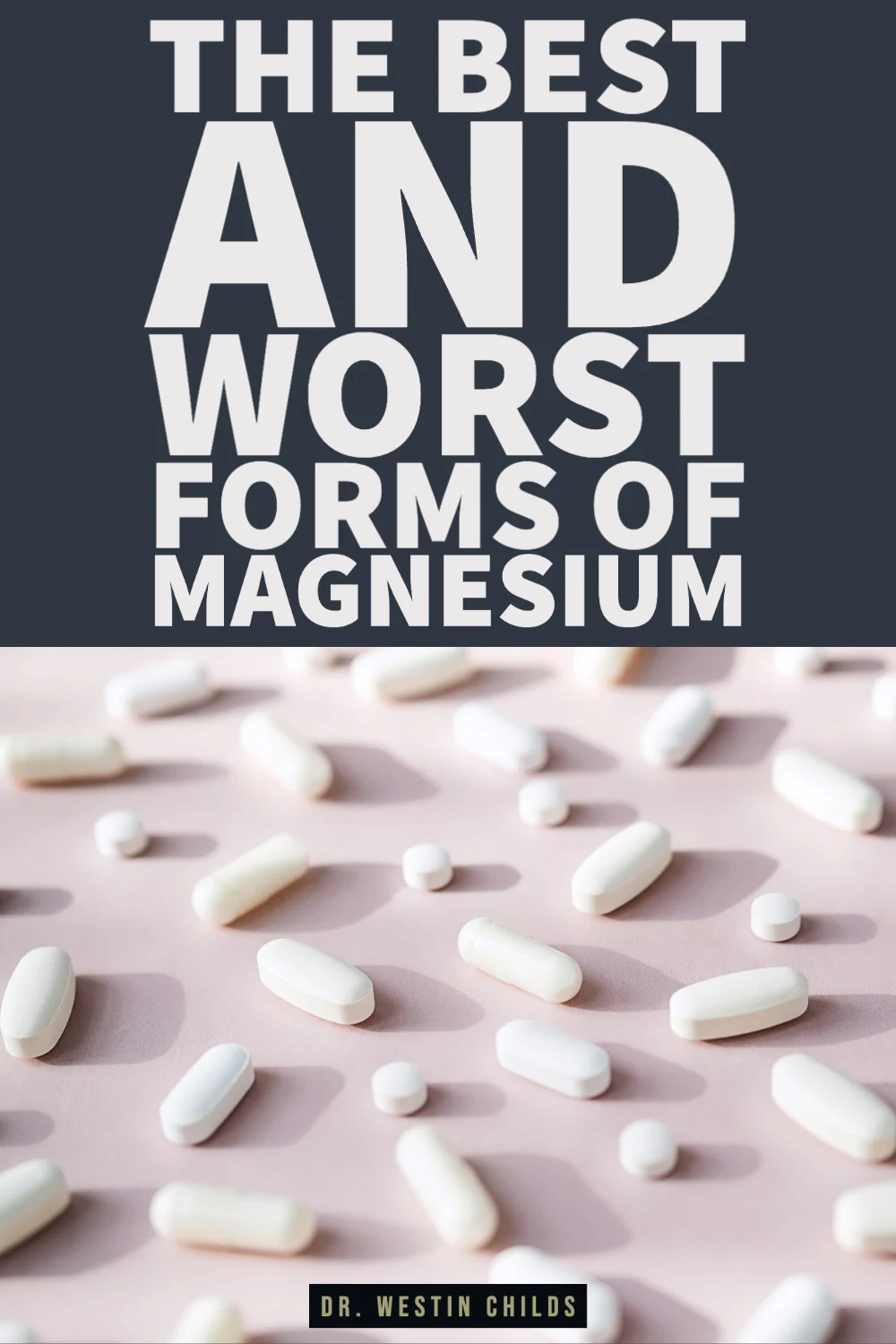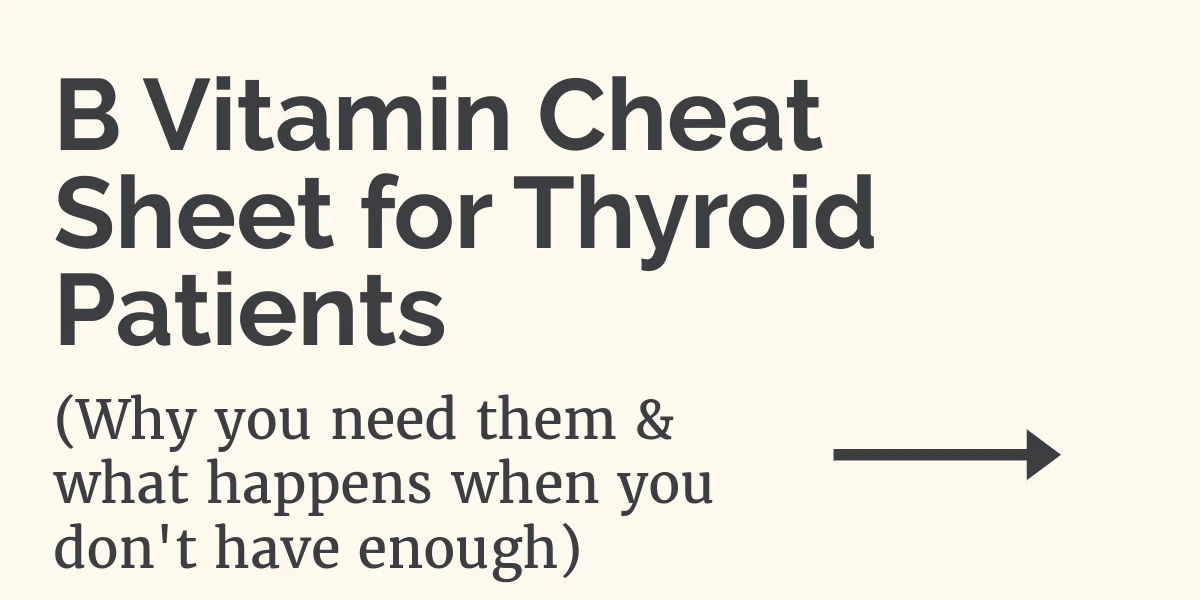Tons of people, probably including you listening to this right now, are not getting enough magnesium.
And this is a big deal because magnesium is used by the body for over 300 different enzymatic reactions (1).
Not having enough magnesium leads to symptoms like fatigue, nausea, stress and anxiety, insomnia, muscle spasms, thyroid problems, headaches, and many more.
But you probably already know that.
So today, instead of focusing on the symptoms, let’s talk about how to fix the problem of low magnesium with the use of supplements.
And when it comes to supplements, you have a ton of different options.
But not all of these options are created equal and not all options work for the same conditions.
For instance, if you want to replace low magnesium AND simultaneously improve brain health, well, there’s a specific form of magnesium for that.
If on the other hand, you want to replace low magnesium AND simultaneously treat constipation, well, there’s a specific form for that as well.
Let’s talk about the BEST and worst forms of magnesium, and which one(s) you should be using depending on your symptoms.
I’ll also share my personal favorite and the ones that I use the most often.
Why Different Magnesium Formulations Exist
Before we talk about that, though, you need to know one thing:
And that is that magnesium is always bound to some other compound. This is because magnesium is very poorly absorbed by itself (2).
And the compound that it is bound to, improves its absorption (or not, as you will soon find out) and sometimes provide additional benefits on its own.
Whenever I refer to a type or form of magnesium, what I’m talking about is the compound that it is bound to and the impact that this compound has on the function of magnesium when it is absorbed.
Make sense? Great, let’s jump in:
DOWNLOAD FREE RESOURCES
Foods to Avoid if you Have Thyroid Problems:
I’ve found that these 10 foods cause the most problems for thyroid patients. Learn which foods you should avoid if you have thyroid disease of any type.
The Complete List of Thyroid Lab tests:
The list includes optimal ranges, normal ranges, and the complete list of tests you need to diagnose and manage thyroid disease correctly!
#1. Magnesium Oxide.
Magnesium oxide is a non-chelated form of magnesium bound to an organic acid or a fatty acid.
This is the cheapest formulation of magnesium and should be avoided by most people!
Based on available research, it has an absorption rate of less than 5% (3)!
It’s also the form that is most commonly found in supplements because of its cost.
Low-quality supplements often use this form because the other better forms are more expensive.
So you think you’re getting a good deal when in reality, you’re using the cheapest and least bioavailable form of magnesium out there.
Magnesium oxide isn’t completely worthless, but it’s not a great form for increasing total magnesium levels in the body.
If you want to use it, for whatever reason, its best use case is for constipation (4).
But don’t expect any significant amount to make it into your body to provide relief from the symptoms I mentioned earlier.
My final verdict: don’t use this form of magnesium! There are way better options out there.
You can check to see if your supplement uses this form of magnesium by looking at the supplement fact panel on the back of the bottle.
It should say something like magnesium as “blank”, if it says magnesium as “magnesium oxide” then that’s a pretty good sign that the overall quality of that supplement is very low and should be discarded in favor of one that is better.
#2. Magnesium Citrate.
Magnesium citrate is magnesium bound to citric acid.
This form of magnesium has laxative properties and is probably the best option to use for those suffering from constipation.
Most of the magnesium in this formulation will stay in your gut and pull water into your intestines, which is why it’s effective for constipation.
Magnesium citrate will give you a solid combination of total body magnesium and better stool support, but do realize that a lot of the magnesium here will be excreted and may not make it into your body.
The dose of magnesium citrate can range from 200 mg all the way up to 1,000 mg or higher.
The best way to use it is to titrate, which means slowly increasing your dose by 100 to 150 mg increments until you feel your stool soften.
If you develop diarrhea, then simply back down on your dose, and the problem will be solved.
#3. Magnesium Malate.
This form of magnesium is bound to a compound called malic acid.
Magnesium malate tries to take advantage of binding magnesium to a substance that the body could theoretically benefit from.
You can imagine that after it gets absorbed and split apart, the body would utilize magnesium for cellular functions and the malic acid component for other functions.
Malic acid is an alpha-hydroxy acid (5) found naturally in fruits and wines and is commonly used to treat dry mouth and fatigue.
Binding magnesium to malic acid improves the absorption of magnesium in the body and provides you with an additional helpful ingredient.
This form is ideal for increasing whole-body magnesium, increasing energy levels, and treating pain syndromes.
So if you have something like fibromyalgia along with fatigue, this would be the best form for you.
Just be aware that this form of magnesium can be stimulating, though, so you wouldn’t want to take it in the evening.
If you are looking to use magnesium for its calming benefits, this is not the best form!
Dosing for magnesium malate is around 300 to 400 mg per day. Make sure to take it in the morning or at lunchtime, but definitely not in the evening.
#4. Magnesium l-Threonate.
This form of magnesium is bound to a compound that helps magnesium cross the blood-brain barrier and has been shown to increase magnesium concentrations in the brain (6), making it the best form of magnesium for conditions like headaches, migraines, depression, and anxiety.
The only problem is that it doesn’t look like it’s a great form for increasing total body magnesium, even though it is well absorbed.
Some studies have shown that this form of magnesium gets excreted out of the urine in high amounts making it a less than ideal form for increasing total body magnesium.

But if you have neurological conditions like depression, anxiety, and so on, then this is still probably the best form to use.
Dosing for magnesium threonate is much higher than other forms at around 1,500 mg to 2,000 mg per day.
It’s not recommended to exceed 2,000 mg per day (because that’s the dosing used in various studies), but there’s probably no harm in exceeding it.
This higher dose is probably also required due to the higher excretion rate, which is why I don’t recommend it for improving magnesium in the entire body.
#5 Magnesium Glycinate (My Personal Favorite).
Magnesium glycinate is a chelated version of magnesium that is bound to an amino acid (glycine, in this case) to improve its absorption.
Magnesium glycinate contains the perfect combination of cost and effectiveness.
You get the biggest bang for your buck, and you get a well-rounded form of magnesium that improves total body magnesium, still helps slightly with brain-related conditions, and will still have some impact on constipation.
If you don’t need any additional fancy benefits and you are just looking for an overall high-quality form of magnesium, then magnesium glycinate is the best choice.
This is the form that I use the most frequently in my own supplements that I formulate.
Dosing for magnesium glycinate is around 300 to 400 mg per day but you can also go much higher than that.
The extra glycine you get from higher magnesium doses isn’t harmful and even has anti-inflammatory and antioxidant properties.
Use magnesium glycinate for sleep, depression, anxiety (7), muscle spasms, stress, and thyroid problems.
#6. Magnesium Orotate.
This form of magnesium is bound to a compound called orotic acid. It is not water-soluble, which means it won’t help much with magnesium, but it may help improve energy production in cells.
It’s not the most ideal form of magnesium, though, because it’s generally quite expensive. So even though it has high bioavailability, I generally don’t recommend its use.
It’s probably best used to support high-energy tissues and for improving athletic performances and heart health (8).
The dose would be around 300 to 400 mg taken each day.
#7. Sucrosomial Magnesium.
Sucrosomial magnesium is magnesium oxide covered by phospholipids in a sucrester matrix.
The encapsulation of magnesium ions increases movement across the gastric and intestinal tracts without the need for interaction with the intestinal mucosa.
In other words, it’s highly absorbed (9) compared to other forms of magnesium.
It also happens to be expensive.
I haven’t tested sucrosomial magnesium much at this point but when I do, I’ll come back and provide more information.
For now, it looks like this form of magnesium is best used for athletic performance, regulating blood pressure, managing mood, improving sleep, improving bone health, balancing blood sugar, supporting cardiovascular health, and treating migraines.
Theoretically, you would need less sucrosomial magnesium given its high absorption rate, but doses still around 200 to 300 mg per day would be ideal.
Final Thoughts
If I could condense all of this information down to just two forms, I would say stick to magnesium glycinate and magnesium citrate.
These two forms are well-absorbed, have a strong safety profile, and are relatively cheap.
We just spent a lot of time talking about how to get more magnesium from supplements, but you also shouldn’t neglect your diet as a source of magnesium!
My recommendation is to focus on eating as many magnesium-rich foods as possibl,e and in order to do that, you’ll want to check out this article.
Now I want to hear from you:
Were you aware of the importance of magnesium?
Did you know that there were so many different types of magnesium out there? Or that some forms are better than others?
What type of magnesium are you taking right now? Is it working for you?
Leave your questions or comments below!
Scientific References
#1. ncbi.nlm.nih.gov/pmc/articles/PMC4379450/
#2. ncbi.nlm.nih.gov/pmc/articles/PMC6683096/
#3. pubmed.ncbi.nlm.nih.gov/11794633/
#4. ncbi.nlm.nih.gov/pmc/articles/PMC7911806/
#5. ncbi.nlm.nih.gov/pmc/articles/PMC7009688/
#6. ncbi.nlm.nih.gov/pmc/articles/PMC9786204/
#7. ncbi.nlm.nih.gov/pmc/articles/PMC5452159/
#8. pubmed.ncbi.nlm.nih.gov/16366126/
#9. pubmed.ncbi.nlm.nih.gov/29630135/









